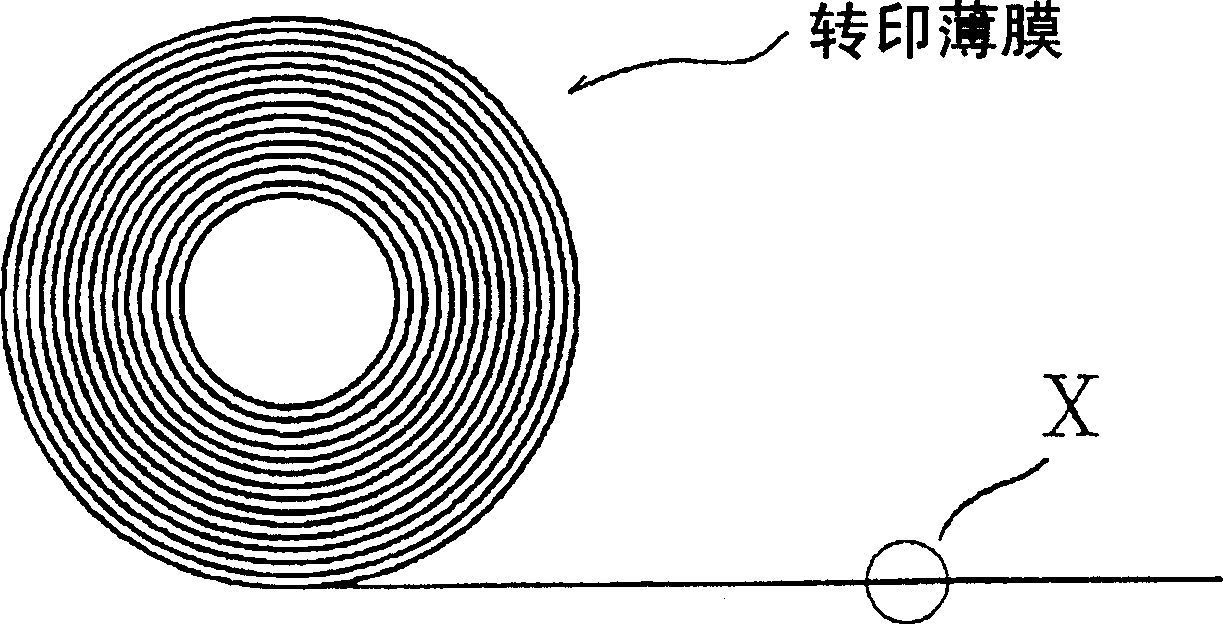Method for manufacturing glass powder contained resin composition, transfer film and panel for plasma display screen using the film
A technology of resin composition and glass powder, which is applied in the manufacture of discharge tubes/lamps, cold cathodes, electrode systems, etc., and can solve problems such as the failure of the cover film to fit normally and the lack of smoothness of the surface
- Summary
- Abstract
- Description
- Claims
- Application Information
AI Technical Summary
Problems solved by technology
Method used
Image
Examples
preparation example Construction
[0112]
[0113] The composition of the present invention can be prepared by kneading the above-mentioned components with a kneader such as a roll kneader, a stirrer, or a homomixer.
[0114] In addition, the composition of the present invention is a paste-like composition having fluidity suitable for coating and printing, and its viscosity is usually 1,000 to 30,000 cp, preferably 3,000 to 10,000 cp.
[0115] The composition of the present invention can be used particularly suitably for producing a transfer film (the transfer film of the present invention) described later, and is suitable for forming a dielectric layer of a PDP. In addition, the composition of the present invention can also be used in a conventionally known method for forming a layer of a film-forming material, that is, for directly coating or printing the composition on the surface of a substrate by screen printing or the like, and drying the coating film. In a method of thereby forming a film-forming mater...
Embodiment
[0144] The following are examples of the present invention, but the present invention is not limited to these examples. Materials used in Examples and Comparative Examples are as follows.
[0145] [glass powder]
[0146] Zinc oxide, boron oxide, silicon oxide, potassium oxide, calcium oxide, aluminum oxide (ZnO-B 2 o 3 -SiO 2 -K2 O-CaO-Al 2 o 3 class) mixture (softening point 565°C, specific gravity 2.79)
[0147] [adhesive resin]
[0148] Resins obtained in the following synthesis examples were used.
Synthetic example
[0150] Mix 150 parts of propylene glycol monomethyl ether acetate, 30 parts of n-butyl methacrylate, 70 parts of 2-ethylhexyl methacrylate and 1 part of azobisisobutyronitrile in an autoclave with a stirrer under nitrogen In the atmosphere, stir well at room temperature. After stirring, polymerize at 80°C for 4 hours, continue to polymerize at 100°C for 1 hour, and cool to room temperature to obtain a polymer solution. The polymerization rate of the obtained polymer solution was 98%, and the Mw of the copolymer (resin a) precipitated from the polymer solution was 90,000.
[0151] [Dispersant]
[0152] Dispersant a: n-decyltrimethoxysilane (compound having a silyl group)
[0153] Dispersant b: Polyoxyethylene glycol (other dispersants)
[0155] Titanium tetraisopropoxide
[0156] [plasticizer]
[0157] Di-2-ethylhexyl azelate
[0158] [solvent]
[0159] Propylene Glycol Monomethyl Ether
PUM
| Property | Measurement | Unit |
|---|---|---|
| softening point | aaaaa | aaaaa |
| softening point | aaaaa | aaaaa |
| thickness | aaaaa | aaaaa |
Abstract
Description
Claims
Application Information
 Login to View More
Login to View More - R&D
- Intellectual Property
- Life Sciences
- Materials
- Tech Scout
- Unparalleled Data Quality
- Higher Quality Content
- 60% Fewer Hallucinations
Browse by: Latest US Patents, China's latest patents, Technical Efficacy Thesaurus, Application Domain, Technology Topic, Popular Technical Reports.
© 2025 PatSnap. All rights reserved.Legal|Privacy policy|Modern Slavery Act Transparency Statement|Sitemap|About US| Contact US: help@patsnap.com



